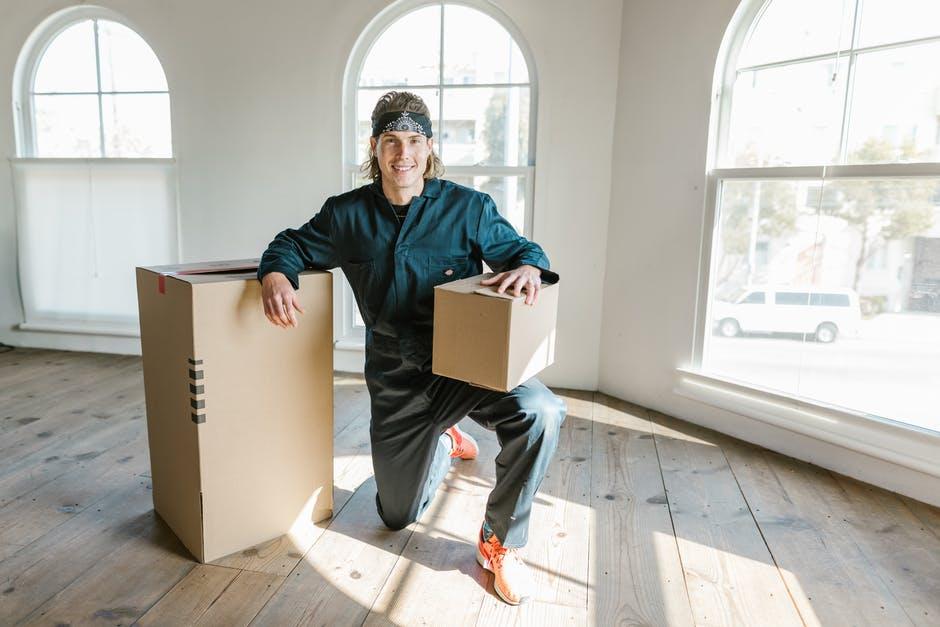Prior to the pandemic, there was already the growing trend of millennials picking up and caring for plants. After everyone had to go into lockdown in 2020, interest in houseplants soared even more!
Today, many of us have rooms filled with greenery, which not only improves our air quality, but also our moods when we see them. So understandably, if you're moving soon, you'll want to take these rooted pals with you.
But some are more fragile than others. And you don't want to accidentally cut their lives short either.
Are you wondering about how to move plants without killing them? Then you're in luck. Here's a mover's guide on how to move with plants successfully!
Can I Take My Plants When I Move?
Your first question might be whether or not moving with plants can even be done. You'd actually be surprised about the answer here!
The truth is, before you tackle how to transport plants when you move, you need to first find out if you even can!
If you're moving within the same state, it's probably a safe bet to assume you can bring your plants along with you. This is because you're not crossing any borders and potentially running into different laws and regulations.
On the other hand, if you're moving to a different state, you'll definitely want to check up on your new state's laws. It might feel like a pain to do all this research beforehand, but it can save you some trouble if you go into this prepared.
Laws and regulations are in place to minimize the spread of harmful pests and diseases, so make sure you're responsible and do your part in this fight.
Other Things to Consider
The laws and regulations of your new home state aren't the only things you need to consider before tackling how to transport plants when moving.
First of all, will you have enough room in the new apartment or house? If you're downsizing, unfortunately, there's a very good chance that your new accommodations won't fit all of your greenery. So you'll have to make some decisions to sell or give away your plants.
Also, climates vary across the United States. If, say, you're moving from somewhere very sunny and dry to somewhere gloomy and humid, not all of your plants will thrive in the new state. In that case, you'll have to get rid of those that won't survive after moving.
Otherwise, if you're set on keeping all your plants, then you'll have to think about purchasing extra equipment to keep them happy and healthy.
Do Movers Move Potted Plants?
If you're enlisting the help of a professional to move, you might be asking: do movers take plants? Well, the answer depends.
For those who are making a short move (especially if you're not crossing state borders), many movers will transport your plants. However, a vast majority won't because as mentioned, plants are living organisms that can be quite fussy, especially when moved around in different environments. As a result, lots of movers don't want to be liable for your houseplants.
If you're making a long-distance move and are crossing state borders, then we'd say the chances of a mover transporting your plants are slim. There's just too much at stake and too much fine print to deal with in regards to the law.
For those thinking about how to ship plants when moving, a choice available to you is sending your plants through the mail. However, we wouldn't recommend it because there are just too many temperature changes and your box will probably be handled roughly.
In most cases, you'll probably move your greenery on your own. Thankfully, we're here to tell you how to move with plants!
Prepping Ahead of Time
As you already know, the majority of plants don't do well when their environment's changed. So to improve your chances, there are some things you need to add to your moving checklist in regards to how to move plants.
Here's what you need to do for your potted plants!
A Month Before
Your plants might currently sit in some pretty pots made of clay, ceramics, etc. But these materials can easily break while in transit!
What you'll want to do is get yourself some plastic pots of the same size and repot your plants into these. Doing this a month before will give your houseplants some time to adjust before being put in transit.
Two Weeks Before
Two weeks before your moving day, you'll want to prune your bigger plants. If you were wondering about how to move with big plants, then pruning is a great way to reduce their sizes and make them more compact.
Pruning also serves another purpose: it'll keep your plants healthier and will encourage better growth once they settle in at your new place!
When pruning, you can use your own hands to pinch off dead leaves, flowers, and even limbs. You can also use gardening shears or sharp scissors if you don't have any.
Do note that while most plants can be pruned, there are some you need to leave alone! In general, you'll want to avoid pruning for succulents and ferns.
One Week Before
Now that you're nearing the big day, it's time to check your plants for any pests. You don't want to bring any unwanted guests to your new house, after all!
If you find any pests, identify them and use the right insecticides to get rid of them.
Not a fan of toxic insecticides? Then you'll be pleased to know that there are plenty of natural homemade insecticides you can DIY!
Two Days Before
At this point, people start getting nervous about plant care. You've made it this far; you're in the home stretch, so don't mess up!
What you'll want to do is keep watering your plants as normal, but stop 2 days before the move. Don't adjust anything, as this might cause your plants to either get too thirsty or be so watered they'll grow fungus.
What to Do on Moving Day
For this part, we'll discuss how to move potted plants. If you want to move cuttings, you'll want to secure the ends with wet paper towels inside of a plastic stem holder. You can then put these cuttings in a secure container and bring it along with you so you can keep a close eye on how they're doing.
In general, you'll want to pack up your plants last. This will minimize the time they spend in suboptimal conditions.
To pack your plants, you'll want to put a plastic bag over the pot and secure it so the soil doesn't get tossed around. Then, set your plants in a snug box and stuff the empty spaces with newspapers. Poke some holes up top.
Put these boxes in the car you're driving, if possible. In fact, they should go up front with you if there's room. If they need to go in the moving truck instead, place these boxes on top of the other ones so they don't get crushed.
How to Move Big Plants
Got a huge palm or monstera you need to bring with you? One of the best moving tips we have for you is to wrap the branches with a thin bedsheet or tissue paper. This will protect them from breaking while in transit.
If you don't have bags big enough to go over the pots, get pieces of cardboard and tape them across instead.
Like with smaller plants, you'll want to place them in the car with you if possible. Otherwise, if they're going in the moving truck, make sure everything's placed in a manner where your plants won't get crushed.
What to Do With Your Plants When You Move
If you're planning to move in one day, this is the best scenario, as your plants will have the least stress possible. But if your trip spans several days, there are some special things when it comes to how to move with plants. For instance, you should bring the plants in with you while staying at hotels.
Once you arrive at your destination, you need to unpack your plants before tackling your belongings. Knowing how to do so is just as important as knowing how to move plants.
Remove your plants from the bottom of the boxes, not the top. This will prevent you from breaking off branches, leaves, and flowers.
Choose a spot for your plants to go and leave them there. They'll need to stabilize and get acclimated to their new surroundings. They might seem a bit droopy at first, but after a few days, they should look normal again!
Know How to Move Plants to Keep Them Thriving
After reading this post, you should now have a good understanding of how to move plants, no matter where you're going.
Most movers won't transport your houseplants, so knowing how to move with plants (and how to pack them!) is essential. Thankfully, with our tips, you'll do a fantastic job!
Do you need to ship your car for your upcoming move? Then use our cost calculator to figure out how much you'll have to pay. We offer quick quotes!



